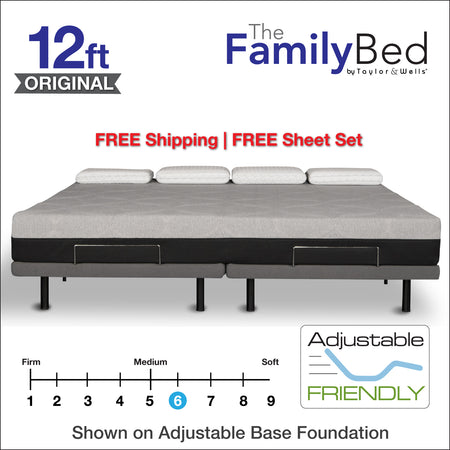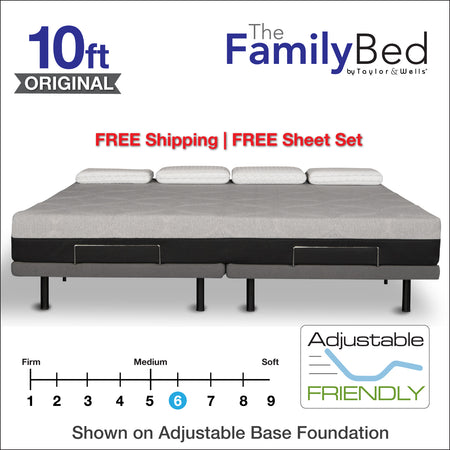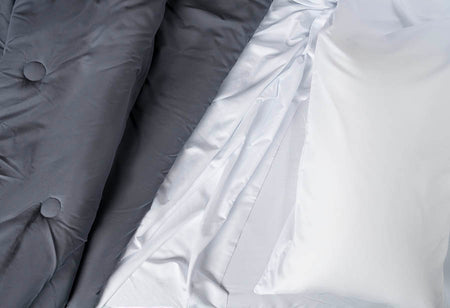Like many Americans, you're probably wondering why your mattress has that ominous tag that says, "Do Not Remove This Tag Under The Penalty of Law." What's it all about, and is it really illegal to remove it from your mattress? And why is it even there in the first place?
Well, the warning that it's illegal to remove the tags from a mattress is not for you. It is for people who make and sell mattresses – specifically, those who handle the mattress before it reaches you. The Federal Trade Commission's Textile Products Identification Act makes it illegal to remove a tag, stamp, label, or other identification.

The tag serves to assure you, the consumer, that you are purchasing a new, never-been-used mattress. It also tells you what exactly is inside the mattress. But this law wasn't always there until the early 20th century.
Before this law came into effect in America, many unscrupulous businesspeople took advantage of their customers in different ways. It was a common practice for manufacturers to recycle old materials in their products.
Some were adding everything from food scraps to corn husks to horsehair and old rags to pad up the mattress. Others were selling old mattresses as new or making unconfirmed advertising claims. Their goal was to cut down on production costs and make greater profit margins. And they got away with it, mostly because consumers don’t see what’s inside the mattress or pillow.
Unfortunately for the customer, old and recycled materials meant exposure to bacteria, contamination, and bugs. This would translate to infections, allergies, discomfort, and other unwelcome issues. In fact, some manufacturers even recycled hospital beddings, thereby spreading infectious diseases like tuberculosis and smallpox.
The need for mattress tags
According to LiveScience, the need for mattress tags started back in the late 1800s and early 1900s. This was after both state and federal regulators became concerned about the materials manufacturers were using to stuff mattresses.
In a bid to stop the unscrupulous practice, government officials started needing all mattresses and pillows to have a tag that clearly defined their contents. So essentially, the mattress manufacturers needed to indicate whether the material was new or recycled because the latter could contain bedbugs, fleas, lice, chemicals, bacteria, or even human excrement. This way, consumers would make an informed decision and stay away from mattresses stuffed with gross or dangerous materials.

A way around the tags
Listing the contents on the tag placed the bad guys at a disadvantage in the marketplace. Consumers went for the cleaner options. This meant a lack of business and low profits for the dirty rag guys – but they wouldn't go down without a fight.
So, some tried to get around the problem. The witty manufacturers followed the law by adding a tag. But, they went ahead and removed it before shipping it to vendors. In some places, the retailers would rip the tags off to help speed up sales. That’s because most customers wouldn’t buy the mattresses with tags that read something alarming – like bug-infested or full of bacteria.
Unlawful to remove the tag
Soon, the defiant behavior got the attention of the federal courts. So, to ensure that manufacturers and retailers did not try to cut the tags and sell the mattress as new if it contained old, used materials, the tags stated that they could not be removed under penalty of law. The US code on Textile Fiber Products Identification makes it illegal to rip off the tag before the sale and shipment of mattresses to the final consumer. It states that:
"After shipment of a textile fiber product in commerce, it shall be unlawful, except as provided in this subchapter, to remove or mutilate, or cause or participate in the removal or mutilation of, before the time any textile fiber product is sold and delivered to the ultimate consumer, any stamp tag label or other identification required by this subchapter to be affixed to such textile fiber product, any person violating this section shall be guilty of an unfair method of competition, and an unfair act or practice under the Federal Trade Commission Act. "
Speaking to Life's Little Mystery, Margaret Davis of the International Association of Bedding said that the penalty varies from state to state. She added that the law label is a consumer information item and an enforcement tool.

At first, though, these tags were stamped "Do Not Remove Under Penalty of Law," which was ambiguous. This was a bit unsettling for many consumers. Some wondered why the government would be concerned about what they do with their mattresses, in their own homes.
Others even made fun of it. In fact, countless TV shows, comic books, card games, and movies helped spread the myth. For example, in the show, Everybody Hates Chris, Chris meets a man who served four years because of the tag. In another film, a woman catches a reporter searching her room, and the reporter bluffs, "Mattress Police. Where are the tags on these mattresses?"
But later on, in the 1990s, a clarification was added to the law "Except by the consumer". This helped people understand who the federal law was targeting. So the tag reads Do Not Remove Under Penalty of Law except by the Consumer.
So, if you were still laboring under the apparently widespread belief that you'll break the federal law and end up in jail for removing the tags, you can rest easy knowing you won't. Now, you don't have to keep up with the annoying tags on your mattress or pillow if you don't want to. Just cut them off. But be careful not to void your warranty, as some manufacturers want everything to remain intact.
Penalties for removing the tag
As mentioned earlier, the penalty varies from one state to the other. Each state designs and regulates their mattress labeling. Violation of this law may attract a series of penalties, which vary by state and may include a notice to stop removing the labels, fixing incorrect tags and citation, and a fine of up to $1,000.






















